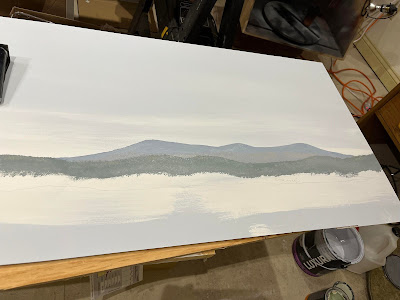For a second year, the good folks at Railway Modellers’ Meet of British Columbia (RMMBC) have invited me to present a virtual clinic at their 2023 event in later this spring. It’s always a pleasure to share ideas with fellow Canadians living on the West coast and thus, I had no reason to refuse their kind invitation.
 |
| GTR 2215 sitting idle at Stanstead Station, circa 1914 |
I’ve been torn apart about what to present, but after a few discussions, I became clear my work on the Stanstead diorama would make a lot of sense. Over the last few months, I’ve sensed a lot of interest in smaller subjects to model and it seems there is a lot of latent desire to model pre-nationalization railways in Canada.
The clinic will explain how this small rural diorama slowly made its way in my mind, the challenges of modelling pre-1918 Canadian railways, kitbashing and printing decent models using easily readily available data and finding efficient ways of building a layout. This project wasn’t about getting everything 100% right, but rather about proving you can do a lot if you are ready to leave being you the RTR approach.
The clinic
will be held on May 4th at 7:05 PM Pacific Time on Zoom. For more
information and access links, please visit RMMBC 2023 page. To be
noted, good friend Chris Van der Heide will present his excellent work on creating
prototypically accurate wrapped lumber loads for freight cars. Having
experimented myself with his technique, I can say it is an essential one for
modellers interesting in Canadian railways in the modern era.
See you soon!
























